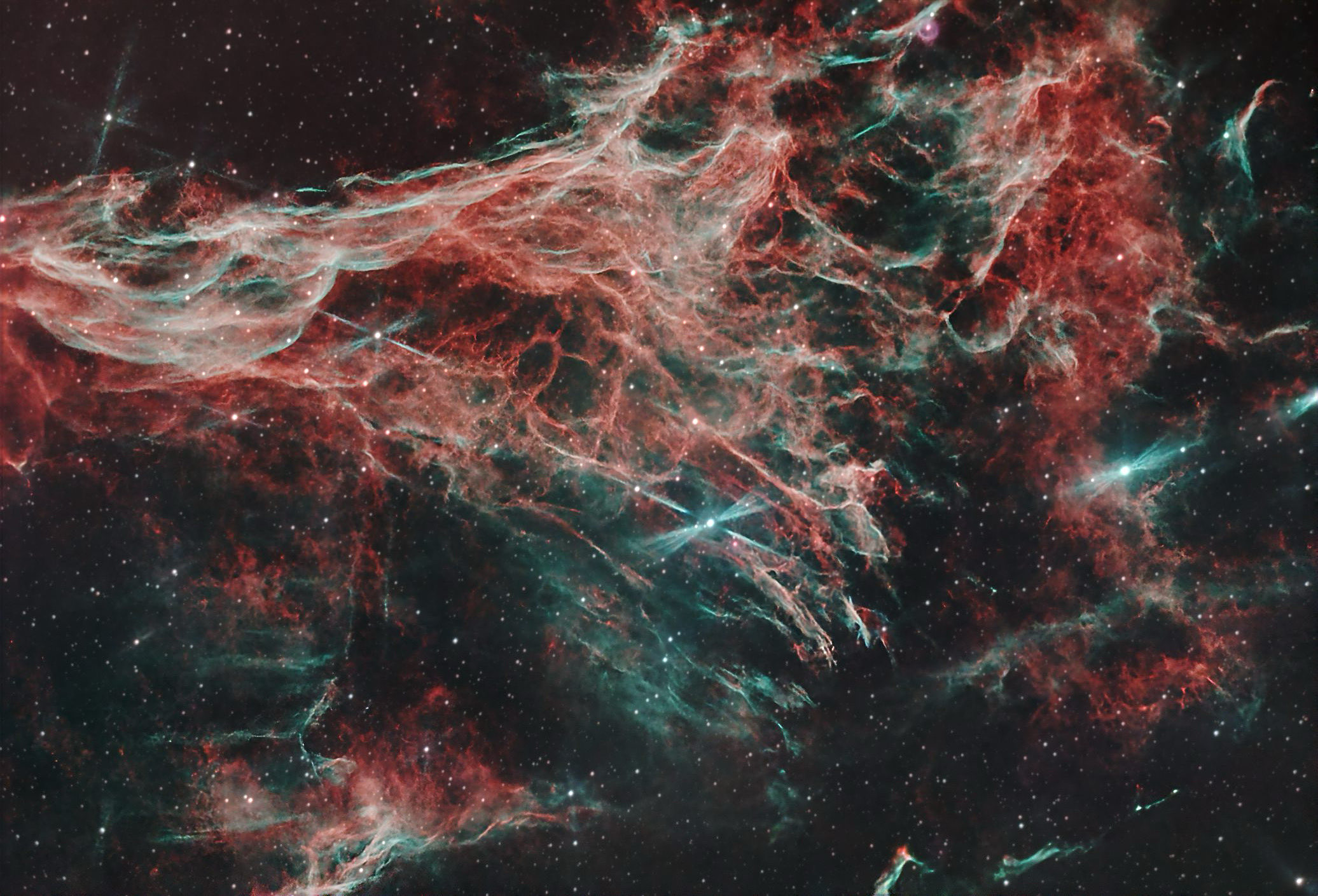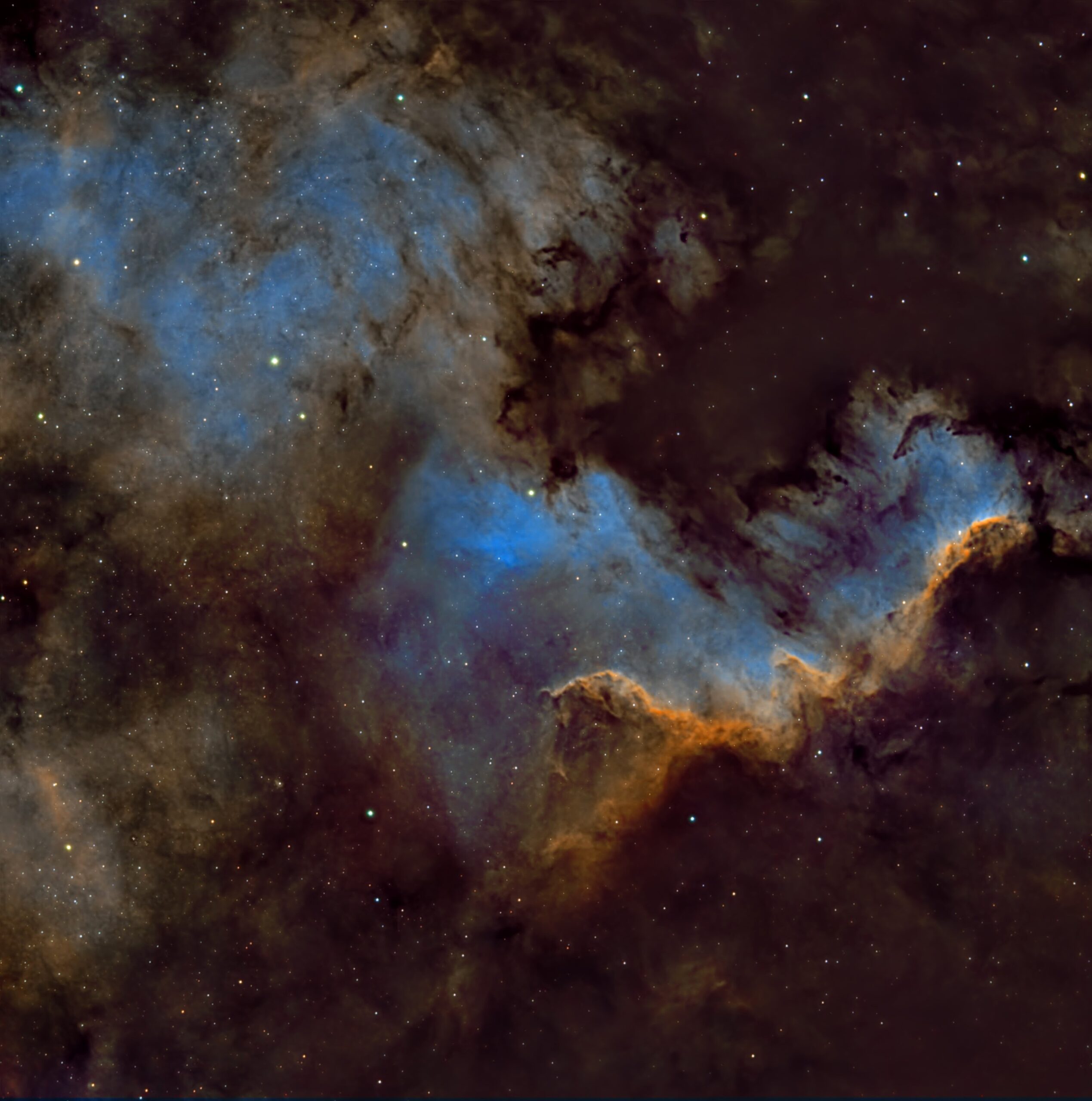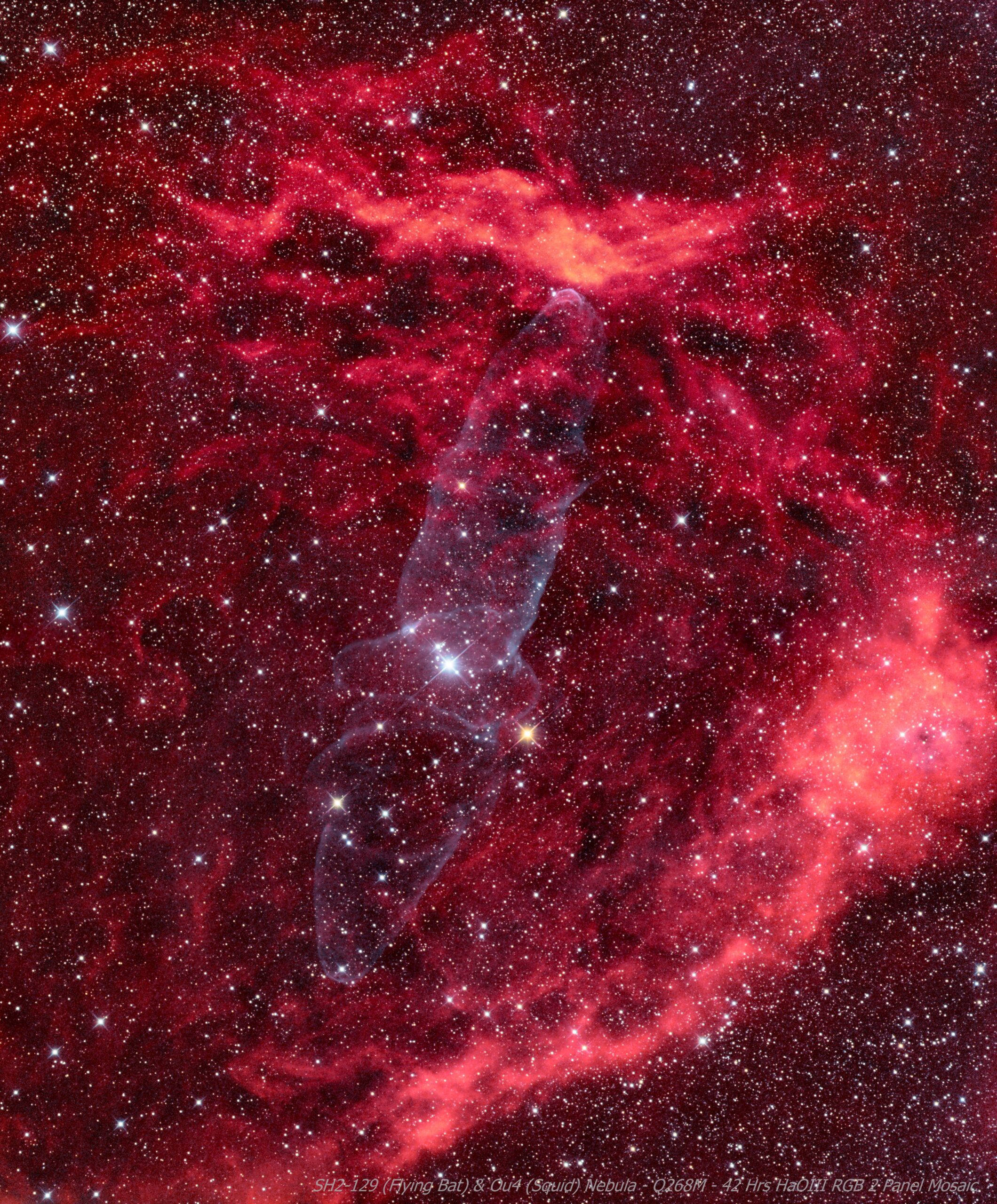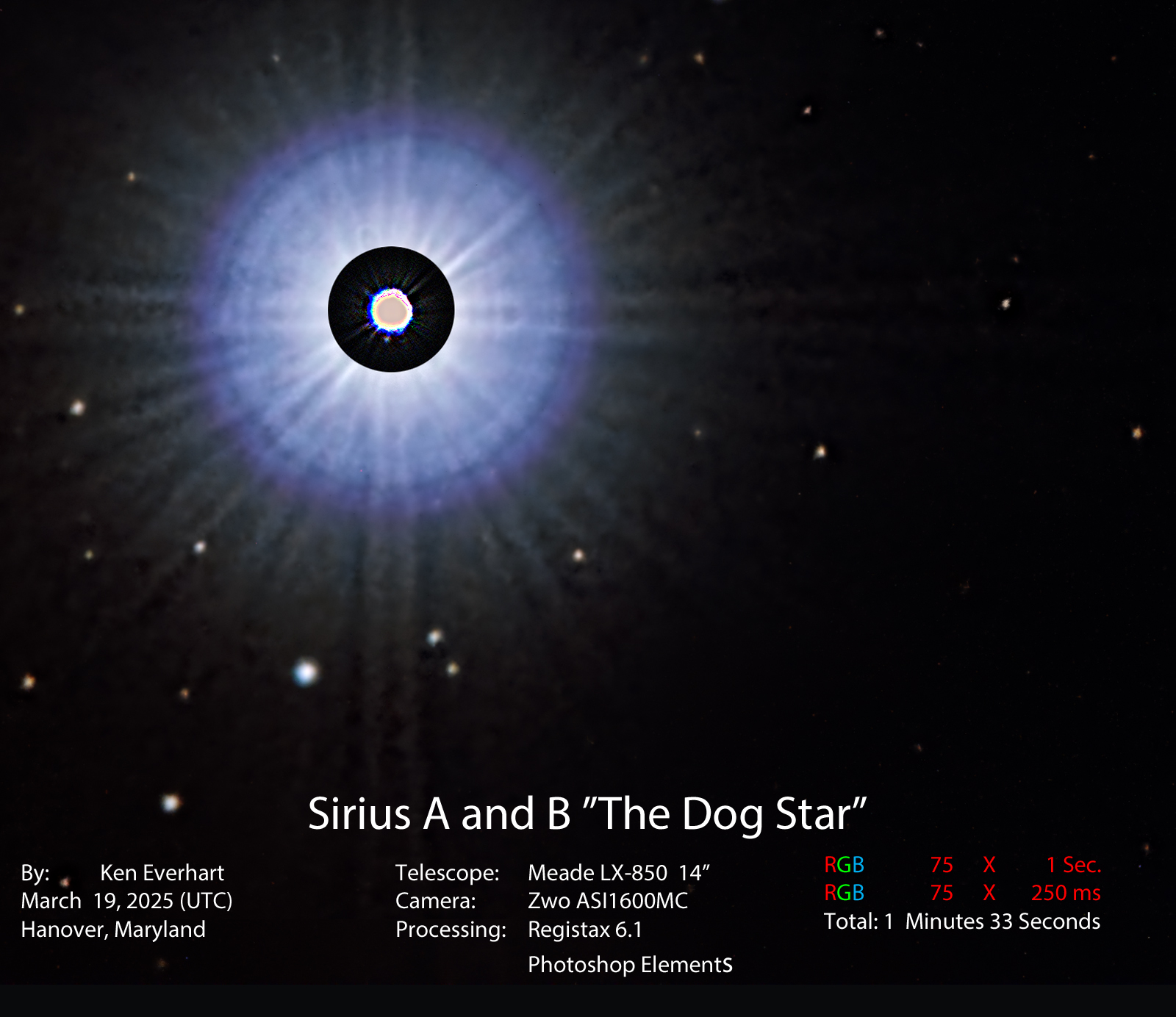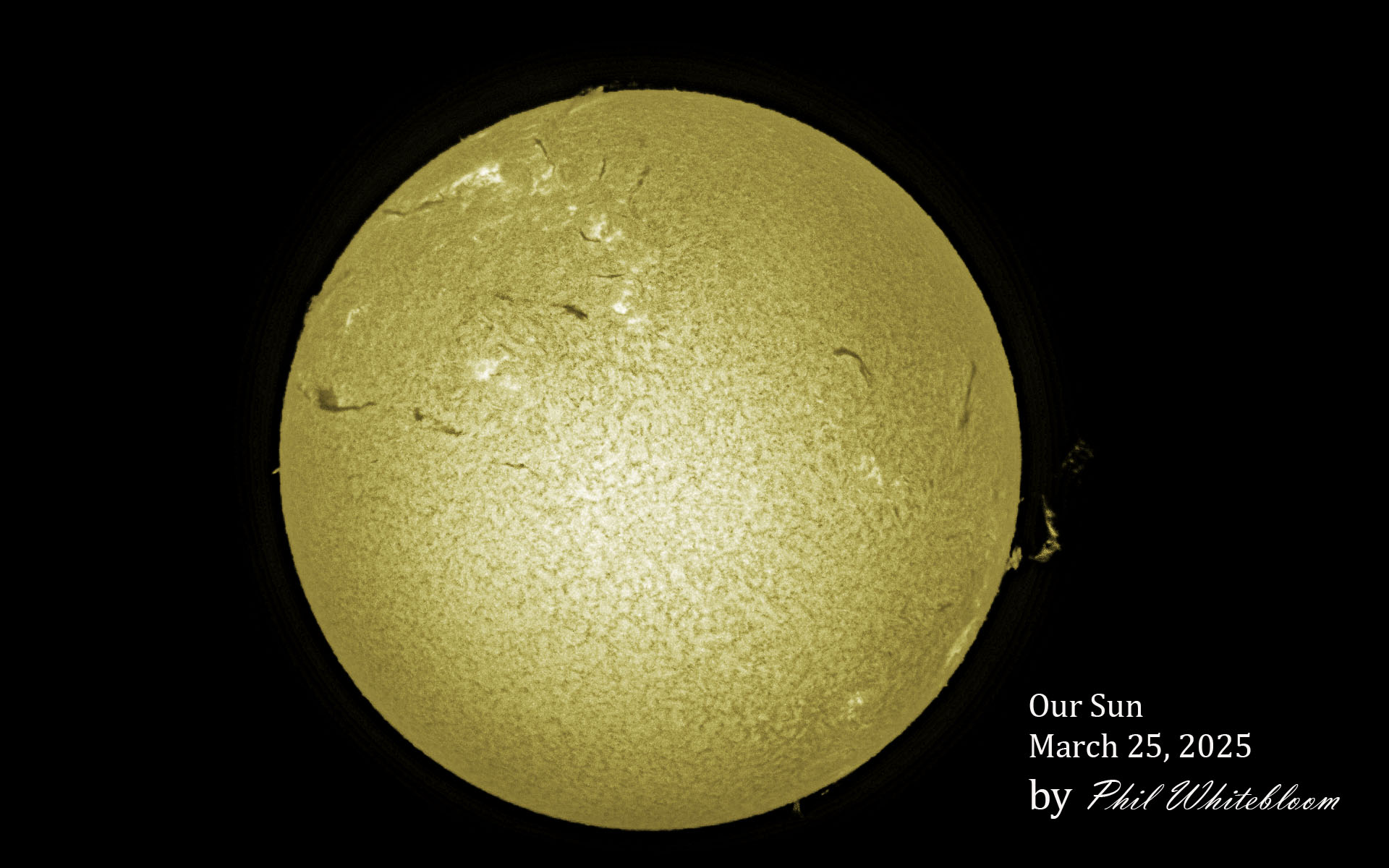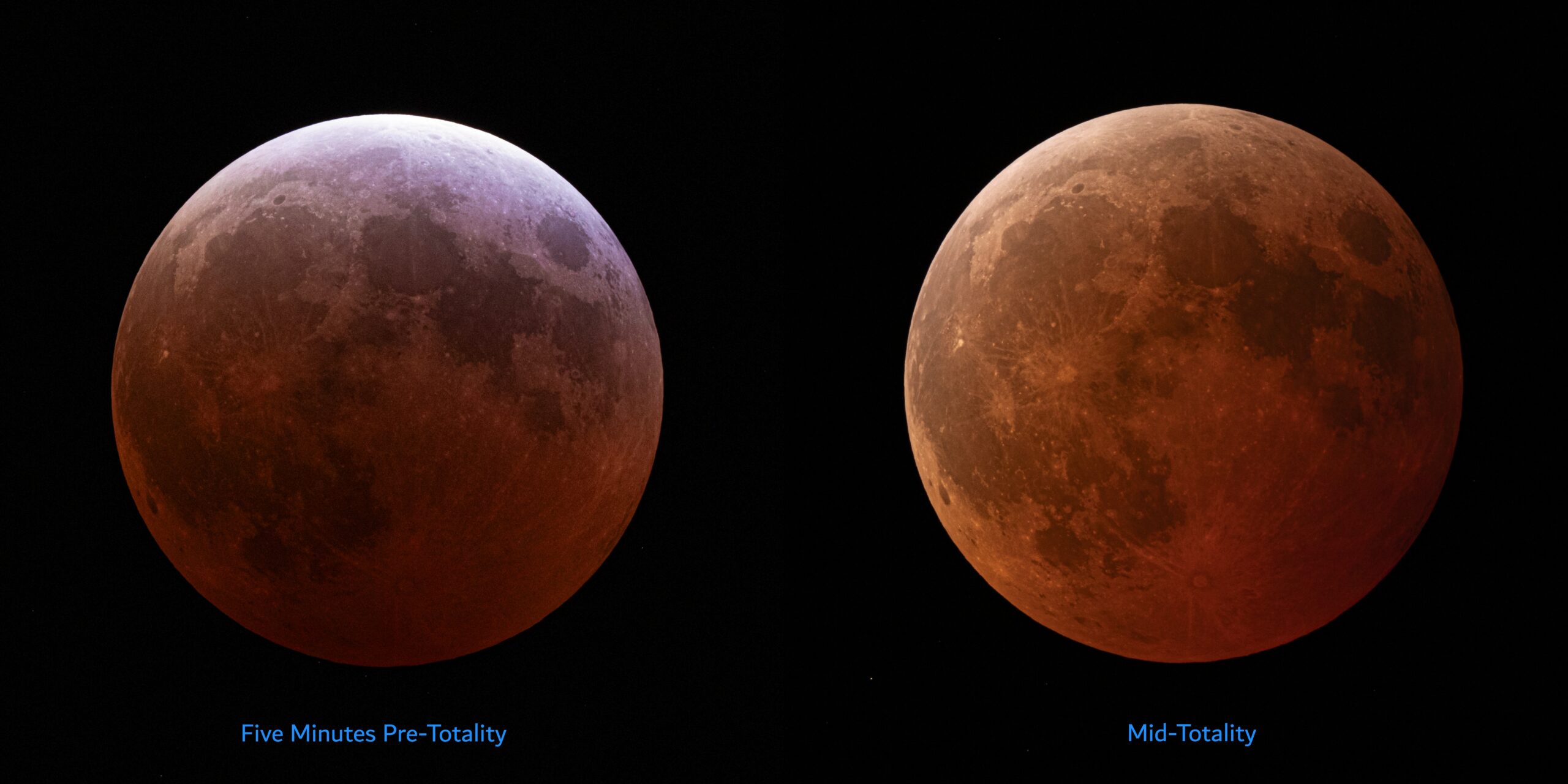HAL Member Image of the Month
The HAL Image of the Month (IOTM) [ a.k.a. Object of the Month (OOTM) ] is selected by HAL’s Board and/or HAL’s Discord members as the best of the given month’s submissions among those who imaged and processed an astronomical object.
September Object of The Month, “Veil Nebula”
Rob Dallimore
This image of the “Pickering’s Triangle” region of the Veil Nebula was captured this month under Bortle 5 skies in Linganore, MD using a 9.25″ Celestron SCT at f6.3.
Additional capture details…
Losmandy G11G
ASI294mc pro
ZWO duo narrow band filter
107 x 180” lights with darks, flats and dark-flat calibration frames
NINA, PHD2, and PixInsight
August Object of The Month, “Cygnus Wall region of NGC 7000”
James Vaughan
This image was captured over two partly-cloudy nights in August, 2025 and submitted as an Object of the Month entry to the HAL Discord Group. Capture Details:
5h 23m
SII – 36m (6x360s)
Ha – 2h 4m (31x240s)
OIII – 1h 16m (12x360s,1x240s)
UV/IR – 47m (47x60s)
Camera – ASI533 MC Pro
Scope – William Optics Z61 with flattener for f5.9 @ 360mm
Mount – EQM35
Guiding – Askar OAG with ToupTek IMX290 mono planetary camera
Filters – Svbony 5nm S,H,O, & UV/IR
Acquisition – N.I.N.A.
Stacking and Processing – Pixinsight, GraXpert
I was initially not pleased with the results, and didn’t even show it to anyone. But when I saw it was the OOTM I decided to try (for the first time) deconvolution. I need to work on using it more skillfully, but I learned that with enough TLC after the fact can bring a lot out of sub-par data. I was pretty pleased with it in the end, I just needed the push that came from the social aspect added by HAL, so thank you!
July 2025 Image of The Month, “The Flying Bat & Squid Nebulae”
Gene Handler
This is a two-panel mosaic of 42 hours of exposures taken with an 8″ f/4 reflector and a QHY268M camera using Ha and OIII filters and RGB filters for the stars. The Flying Bat nebula (Sh2-129), discovered in the 1950’s, shows up in hydrogen alpha light and is here colored red and yellow. The Squid nebula (Ou4) was discovered by an amateur astronomer in 2011 and emits primarily oxygen III light, here colored blue green. The Squid nebula is extremely dim and one of the faintest nebulae I’ve imaged. While the distance to these objects is not at all certain, they are believed to be physically related with the Flying Bat being an HII region and the Squid believed to be the outflow from the bright star system at its center.
June 2025 Image of The Month, “Sirius A & B”
Ken Everhart
Sirius, the brightest star in the night sky, is orbited by a much fainter companion, “Sirius B.” Orbiting its primary every 50-years, Sirius B is the closest example of a “White Dwarf Star.” White Dwarfs are stars that have aged past the Red Giant stage in their evolution and collapsed into a dense object that slowly cools. Although probably the size of the earth, Sirius B contains slightly more mass than our sun. A teaspoon full of the degenerate matter making up Sirius B would weigh over five tons on our earth. Likewise, I would weigh 66-million pounds should I wish to stand upon the surface of Sirius B.
Sirius B can be seen in this image as a tiny white dot just below its brighter companion. While Sirius shines at magnitude -1.67, Sirius B appears as magnitude 8.4 – fainter than Neptune! Moreover, they are currently separated by a tiny 10 arc seconds! To capture both stars. I imaged Sirius with a series of short 250-millisecond exposures. After stacking them, I processed the stack in the same way I tease Jupiter’s innermost moons out of the data.
Unfortunately, the result was a bit boring with no background stars and nothing to show the powerful glare of Sirius. Therefore, I used a second stack of one-second exposures to show the powerful brightness of Sirius and the background stars. I struggled with a way to represent both products on the same image, and decided just to inlay the shorter exposure containing the two stars atop the longer, prettier exposure.
As Sirius B progresses in its orbit throughout the upcoming years, its position relative to the background stars should be readily apparent.
April 2025 Image of The Month, “Our Sun, March 25th, 2025”
Phil Whitebloom
March 2025 Image of The Month, “Blood Moon” Total Lunar Eclipse
James Willinghan
Total Lunar Eclipse taken from Elkins, WV on March 14th, 2025 with Canon T7i through Williams Optics 132mm refractor telescope.
The right image was taken mid-eclipse at 0714UT. The reddish “blood moon” effect is caused by light being refracted through the earth’s atmosphere (with most of the blue light being scattered) similar to why we experience red sunsets.
The left image, taken at at 0625UT, shows the “Japanese Lantern Effect” which is noticeable just before and after the total eclipse. The blueish tint is due to light passing through the upper stratosphere where the ozone layer absorbs a larger fraction of the red light.
February, 2025 Image of The Month, SH 2-308, The Dolphin Head Nebula
Jim Johnson
- object: The Dolphin Nebula
- imaged by: Jim Johnson
- image capture/processing details:
The Dolphin Nebula (SH 2-308) – HOO Palette
Tele Vue NP101is/ZWO ASI6200MM-P
Scout Key, FL (Winter Star Party 2025), Bortle 3
Ha 20 x 600s = 3:20
OIII 26 x 600s = 4:20
Total integration: 7:40
May 2024 OOTM was M51, the Whirlpool Galaxy.
Jared Case
- object: Whirlpool Galaxy (M51)
- imaged by: Jared Case
- image capture/processing details: Captured with a 130mm Refractor, at 737mm focal length. The camera was a monochrome 2600MC.
- Red : 1hr 15min @ 180s
- Blue : 1hr 15min @ 180s
- Green: 1hr 15min @ 180s
- HA : 2hrs 4min @ 240s
- Lum: 4hrs 40min @ 180s
- location: Highland, MD
- date: May 2024
April 2024 OOTM was the North American Total Solar Eclipse.
Gene Handler
- object: Total Solar Eclipse
- imaged by: Gene Handler
- image capture/processing details: Totality from Arkansas. This is a stack of 150 x 1/30s + 43 x 1/4000s exposures through an 8″ f/4 reflector. (re-uploaded w/ slight crop)
- location: Arkansas
- date: April 8, 2024
June/July 2023 OOTM was the Veil Nebula
- Object: Eastern Veil Nebula, NGC 6995
- Imaged by: Ken Everhart
- Image capture/processing details: see image
- Location: Hanover, MD
- Date: July 2023
August 2023 OOTM was objects within the constellation Cygnus.
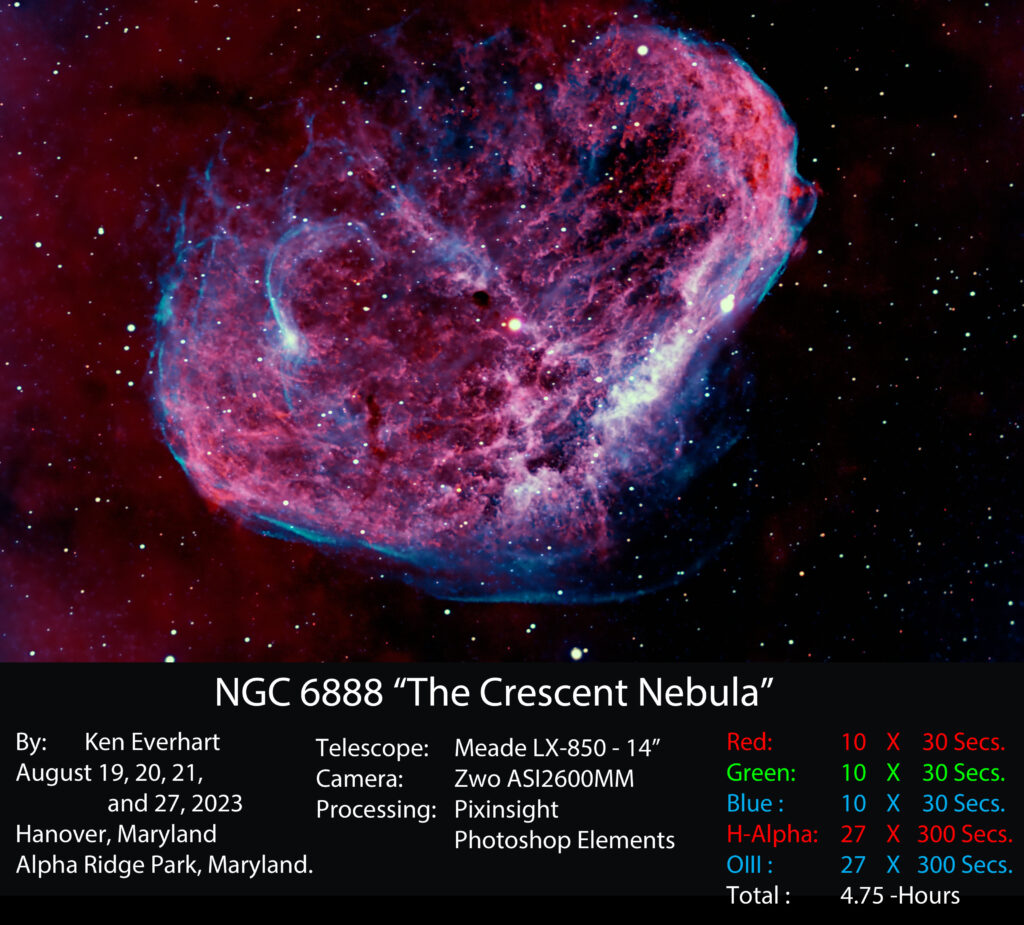
- Object: Crescent Nebula
- Imaged by: Ken Everhart
- Image capture/processing details: see image
- Location: Hanover, MD and Alpha Ridge Park
- Date: August 2023
